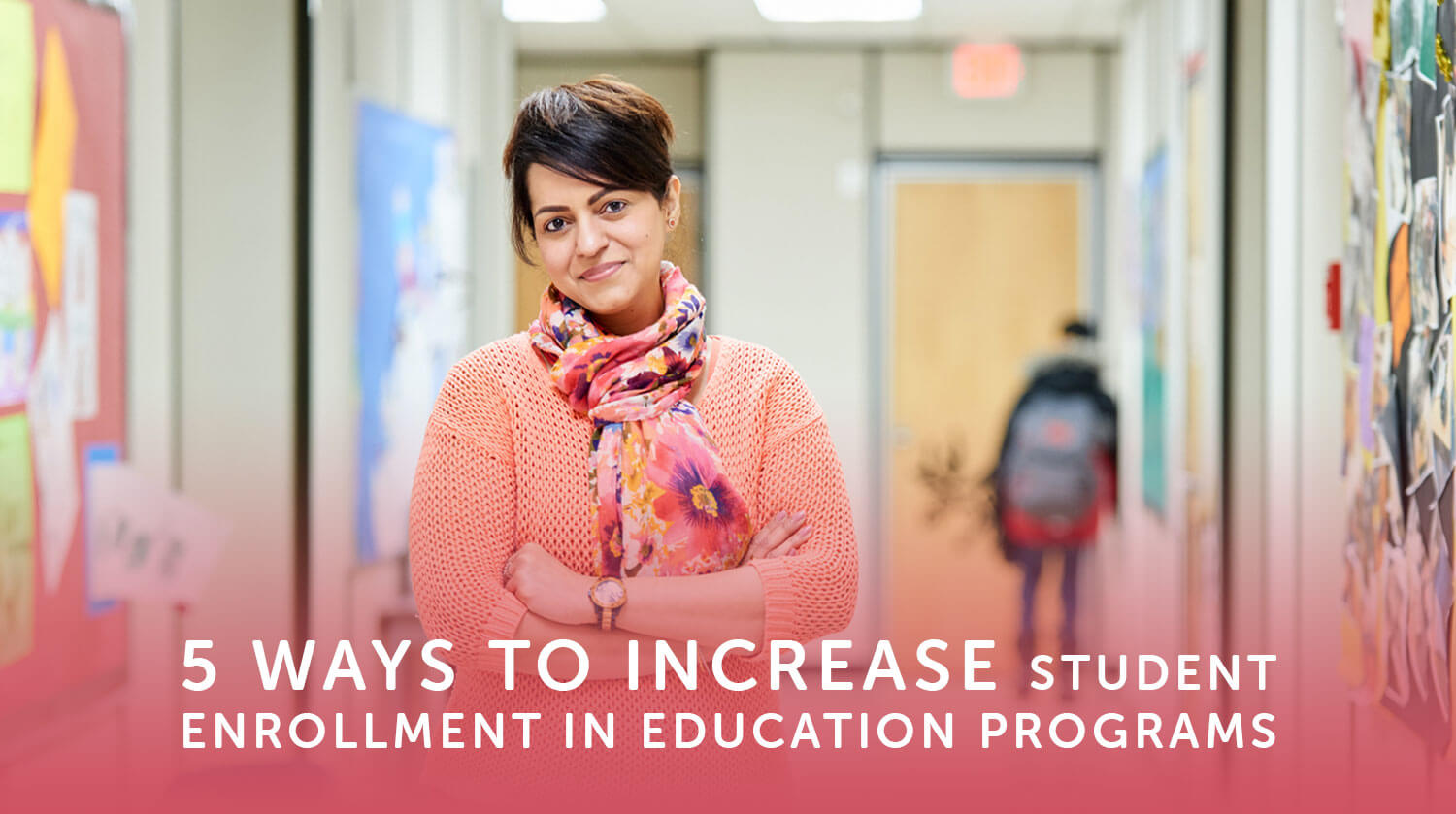During a time of widespread teacher shortages, community colleges offer a much-needed pathway toward education certification.
It’s no secret that schools across the country are facing a teacher shortage that is only growing worse as overworked staff burn out. In response, the U.S. Department of Education has released sweeping partnerships with school districts and colleges of education across the country to try to increase the number of qualified teacher candidates.
While a bachelor’s degree is the minimum requirement for most teachers, that doesn’t mean that community colleges have no role to play in preparing educators to fill the teacher shortage. On the contrary, community colleges have a lot to offer any student interested in a career in education.
Many prospective community college students are looking for affordable and convenient ways to complete the first two years of their coursework before transferring on to a four-year institution. For those with families or who already have a day job, community colleges can be a way to get halfway through their degree without disrupting their current obligations.
But for them to consider community college as a true possibility, they need more information. Raising enrollment is most often a matter of raising awareness. Here are the issues you should focus on if you’re interested in increasing student enrollment in your education programs.
1. Headline the many opportunities for financial support.
Community colleges are usually more affordable than four-year universities for almost any degree, and many states have programs in place to make tuition at community colleges completely free. Unfortunately, many prospective students remain unaware of these programs—and no wonder. They’re already busy caring for a family, working a full-time job, or both. It’s up to community colleges to market grants, scholarships, and other financial aid programs—and they should do so as boldly as possible.
As the DoE’s recommendations make clear, loan forgiveness programs are also being extended to students who enroll in education degrees. These programs vary widely, with different qualifications and terms, so how you talk about them will depend on your region. But for anyone on the fence about signing up for a degree in education, knowing that the cost could ultimately be free is a big incentive.
2. Draw attention to specialty programs and certifications.
Education degrees are not all the same, and some positions are more in demand than others. A recent article from The Washington Post reported that, of the teaching vacancies in education, the biggest shortages were in special education, elementary education, math, and English as a second language/bilingual education.
Specialty education and elementary education degrees are common transfer programs for community colleges, and should be emphasized as in-demand degrees. Meanwhile, ESL certification is a valuable credential on its own, and is especially in demand in areas where the proportion of ESL students is on the rise.
3. Don’t forget about education administration roles.
Another statistic of note from the Washington Post article was that, of public schools reporting staff shortages, sixty percent of them were for support staff positions. These are frequently administrative roles, or roles filled by paraeducators. Many of these jobs only require associate degrees to fill, while others benefit from having a certification to go alongside another degree.
4. Share success stories of students who transfer on to four-year programs.
Since a bachelor’s degree is a requirement for so many education jobs, many community college students will be planning to transfer. Fortunately, the high transfer rate can work well for community colleges, given that the biggest hesitation many have about this path is the concern that they’ll have to retake courses. The more success stories a community college has of students who successfully transfer, the more other students will be encouraged to follow this same path.
However, successful transfer stories depend on institutions providing accurate guidance to their students about which classes they will need to take, or which courses won’t transfer as easily. For instance, some students prefer to load up on general electives while at community college, but these are precisely the courses less likely to have a defined transfer pathway as part of an education degree. Make sure your student advisors are well informed so that they can provide the best guidance to students.
5. Highlight professional training opportunities.
Many teacher training programs rely on practical, on-site experience as a key part of preparing students to enter the classroom. In fact, the Secretary of Education, Dr. Miguel Cardona, has explicitly called on states to raise the number of residency programs, as well as the grants to fund them, so that students can work as substitute teachers, paraprofessionals, and tutors while completing their coursework.
Details about these programs can be influential for helping students sign up, as they not only provide valuable material for resumes, they also are paid work that can help make enrollment more tenable.
Aperture can help you promote your programs with long-form content, delivered through multichannel marketing pathways.
As you can tell, many of these marketing options require detailed, information-rich articles. These selling points can’t be conveyed on a billboard. But content marketing does provide the format to elaborate upon them until every question your students have for you is satisfied.
At Aperture, we provide both the content and the means to distribute it. We have a library of articles on a range of topics that our clients can draw upon as a basis for their own campaigns. Our CampaignBuilder then makes it easy to edit those articles to fit the specifics of a program or of an institute’s unique regional policy. Finally, our distribution channels, including print direct mail, online microsites, and social media posts, can spread that content to the audiences who need it most.
Contact us today and have your first campaign launched before the next semester begins.


